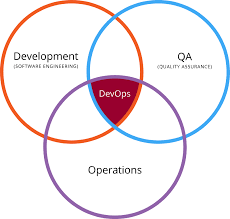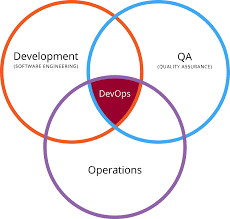DevOps vs SysOps - Understanding the Difference
There is no doubt that the technology is advancing towards a much better future. We were introduced to many top techniques in the last decade. One...
4 min read
Preetisha Dayal : Aug 9, 2018 12:00:00 AM

DevOps is an application that is covering several philosophies, tools, and practices that can deliver services and application in a better and faster way. With the help of DevOps, it is possible to enhance the quality and deliver services in a better. They are better than the traditional practices and approaches that are used in an organization. The software management and development practices have seen a wide change in the last few years.

Even the companies that are using the DevOps can observe better customer services and provides a competitive edge in the market. Now, the development and operation teams have combined together to use the DevOps approach for the software development. They both are now working together to cover all the phase of the software development lifecycle from planning to deployment and leaving it in the live environment for a user to use.
Many companies are combing the teams to help them to understand the skill set used in the technology. Now in DevOps practice, the operation team understands concepts and technology such as testing, source control and agile development that were used by developers during traditional approach. With time, DevOps has gone beyond the internet start-ups phase and is now counted in the list of technology that is used widely by organizations.
The term DevOps is a combined form of Development and Operations. Here Dev is referred to as the complete team members that help in the development of a product. This includes the complete team including quality assurance, product development, software testers, and other members involved in the development phase. The Ops symbolizes system and database administrations, system engineers, security experts, network and release engineers, etc.
This has been done to improve the user experience. The practices that have made it easy to test all the functionality and keep the security of software in mind are - continuous integration and delivery. The real-time performances metrics are other aspects that are used to maintain the reliability of software by monitoring and logging.
However, when a different number of codes were combined together then that results in coming up with many bugs which took over a month to change them before the integration process. This was not an ideal approach which results in lower productivity rate.
This term was introduced to the coding world as an agile engineering practice that was used as the methodology of extreme programming. Then, DevOps adopted the term so that they can successfully execute the integrated program to the release. In this, the code is checked, using usable codes to compile the code and then perform validation testing methods.
However, all users are not allowed to check the software as the only limited audience can use it. Then there a loop of automated feedback that is, later on, tracked and monitored to check the use, reliability, and quality before the code is launched for everyone.
DevOps has made it easy to eliminate all the small hurdles that kept a developer hooked in his seat for many days. It has also managed to remove the entire problem that was faced by the developer and operation team while communicating the project. It has bought reliability between the teams by increasing the efficiency and consistency. The customers are now able to receive better service and development and operation team is able to meet their goals in a much efficient manner.
Need a tech solution for business? Get in touch.

There is no doubt that the technology is advancing towards a much better future. We were introduced to many top techniques in the last decade. One...

Microsoft launched its latest Windows 8 operating system on October 25, 2012. The techno giant unveiled its Windows 8 at a press conference in New...

Unity 3D is an all-in-one platform for mobile game development. It has gained tremendous attention from the game developers community with its quirky...